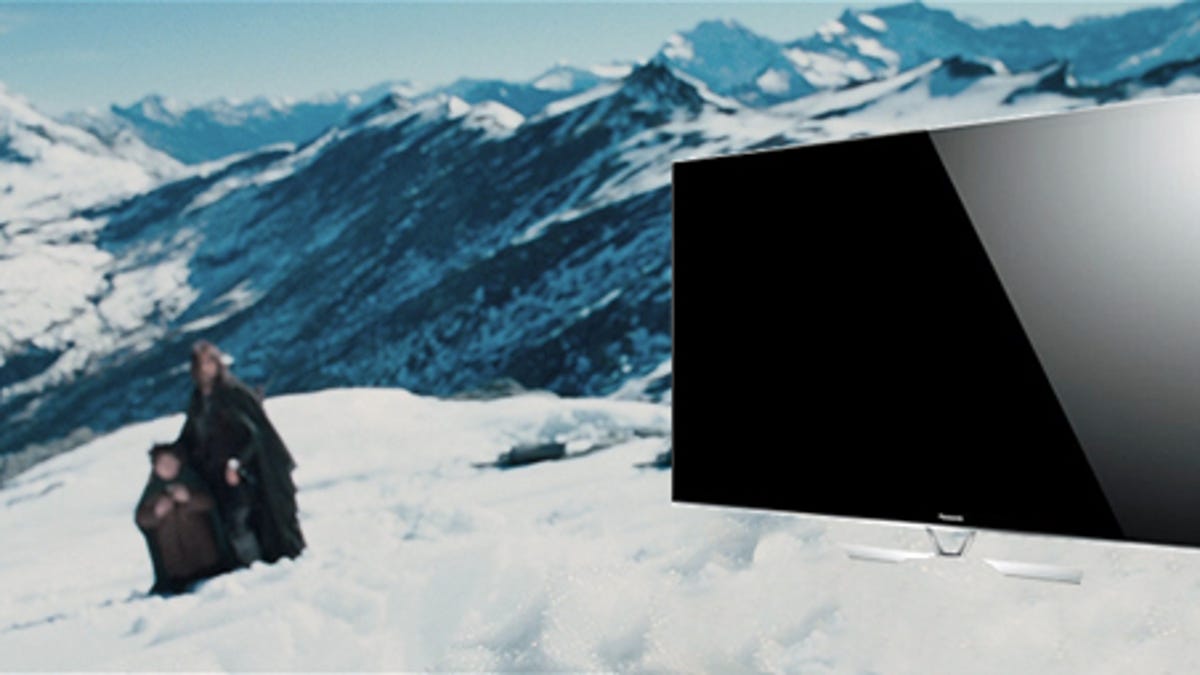Plasma TV altitude: How high can they go?
Because of how they work, plasma TVs don't handle high altitudes well. But how high is too high?

David Katzmaier and I have gotten e-mails asking a seemingly odd question: how high can plasma TVs go? These e-mails, from videophiles living in high-altitude places such as Denver and Santa Fe, are concerned plasmas either won't work for them, or will have a loud buzzing.
Turns out, they're sort of right.
Plasmas create light with tiny pixel-size buckets lined with a luminescent material known as a phosphor. These buckets are filled with a noble gas (such as argon). Electrodes spark this gas into a plasma, which releases UV light, which in turn makes the phosphor glow a specific color: red, green, or blue. The pressure of the gas and strength of the panel structure/glass are balanced against the external air pressure...at sea level.
As you head toward space, the air gets thinner and there's less pressure. Since plasmas are sealed, the noble gas expands, pushing the glass apart ever so slightly. As such, it makes it a little harder for the electrodes mounted on the front of the glass to do their electro-magic. As they work harder, they and the glass make a little extra noise. It's not a lot, but in a quiet room with no TV audio, you could probably hear it. It will be louder with larger screens, or during really bright scenes (think mostly-white material like hockey or skiing, and/or with a brighter picture mode like Vivid or Dynamic). Plasmas have gotten a lot better, designs have become more robust, and the glass used has gotten stronger, so this is far less of an issue than it once was.
How much less of an issue? I asked LG, Samsung, and Panasonic what altitudes their TVs were rated for. Here's what they told me:
LG: 2,900 meters/approx. 9,500 feet
Samsung: 2,100m/~6,900ft
Panasonic: 2,200m/~7,200ft (VT, GT, ST, UT, U series), 2,600m/8,500ft (XT and X series)
(Note: For Panasonic this is 2012 data, 2013 info wasn't available. LG and Samsung's is the same for both.)
So what does this mean? Well, Denver is around 5,400 feet, so that's fine. Santa Fe is 7,200, right on the cusp for Panasonic and Samsung, but fine for LG. People in places like Breckenridge (9,600ft), La Paz (11,942ft), or La Ronconada, Peru (16,728ft), might need to consider LCDs. If you're planning on hiking Everest, leave your plasma at home.
Bottom line
You've got to be pretty high to not want a plasma. Or is it, pretty high not to be able to get a plasma. Probably the second one. If you're up at a rarefied elevation and are concerned about possible buzzing, check out a local store (if possible). If there's any buzzing, you'll be able to hear there, or when you first plug the new TV in at home.
If you live at a high altitude, should should you consider an LCD over a plasma because of this? Maybe. On one hand, it seems logical from an outsider's point of view that if you're driving the electrodes harder (or even just differently) it could introduce accelerated wear, especially in the all-important TV power supply. On the other hand, none of the plasma manufacturers call out this issue, and since they're the ones with the most to lose if there were lifespan, performance, or other problems at high altitudes, you'd think they would. Even if just to cover their butts.
Got a question for Geoff? Send him an e-mail! If it's witty, amusing, and/or a good question, you may just see it in a post just like this one. No, he won't tell you which TV to buy. Yes, he'll probably truncate and/or clean up your e-mail. You can also send him a message on Twitter: @TechWriterGeoff.

